Iron Ore Resistance
Iron ore prices have been on a tear this year, and China’s steel mills are not going to take it anymore.
“…eight steel mills will create an investigation group, led by Baowu and assisted by the others, to look into the pricing methodology of imported iron ore, to coordinate with futures exchanges to stabilize the market, and to plead to government departments to ‘sustain market order’.
…the companies and the CISA [China Iron and Steel Association] blamed the price surge on poorly designed methodologies by price reporting agencies publishing physical prices, speculators in the futures market and poor trading mechanisms in the spot market.
Parabolic Iron Ore Prices
Iron ore prices hit new records before this news dropped. Iron ore futures trading on the Dalian Commodity Exchange roughly doubled in 2019 at their peak. Friday’s news took down prices about 5%. The chart below shows the parabolic rise in iron ore prices in recent weeks. Note the dramatic difference between 2019’s price trajectory and the choppy trajectory of the prior two years.
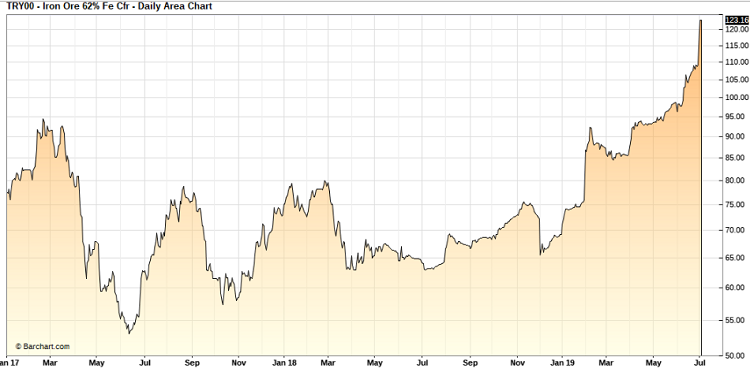
Source: Barchart
The market narrative explaining the surge in iron ore prices to record highs has been all about supply: cuts in production and shipments have come from another mining disaster in Brazil and a destructive cyclone in Australia. Clearly Chinese steel mills are no longer satisfied with this narrative. Their collective action demonstrates once again why parabolic price action is usually unstable: the extreme forces action whether it is from profit-takers and/or the parties suffering the most from the higher prices.
Mixed Gains for Iron Ore Stocks
The parties benefiting from the price run-up have experienced mixed impacts given their different market positions. BHP Billiton Limited (BHP), a well-diversified commodities producer, is up 22.0% year-to-date. Rio Tinto (RIO) has a relatively high concentration in the iron ore business, so the stock has out-performed BHP with a 30.6% year-to-date gain. Vale (VALE) is dealing with the aftermath of January’s mining disaster and the resulting drastic cuts in production; the stock is only up 1.4% year-to-date.
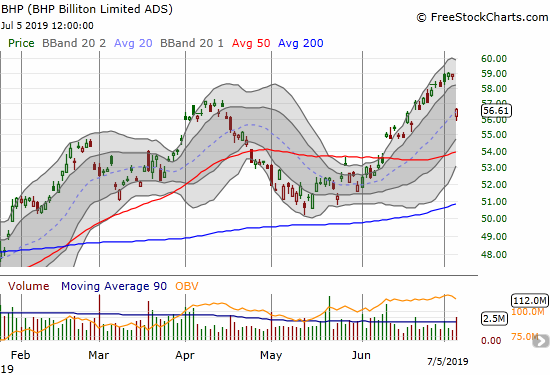
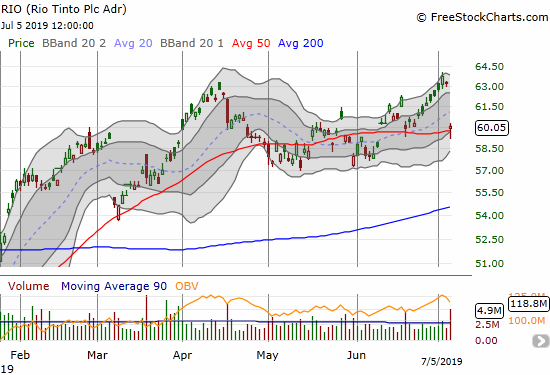
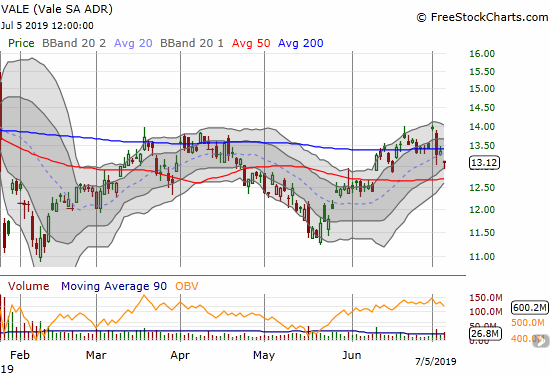
Source for charts: FreeStockCharts
The Iron Ore Pairs Trade
The extremes in price on RIO and BHP re-activated my interest in the pairs trade. Price extremes offer good risk/reward setups for pairs trades because of the high odds of either an extension of the trend producing the extreme or an eventual abrupt and sharp reversal off the extreme.
In recent pairs trades, I decided to switch to going long BHP and short RIO. This change in strategy proved particularly fortuitous this round. I often take profits with such sudden success, but I decided to wait until at least the coming week. I doubt sellers can finish de-risking in a single day when the world’s largest buyer of iron ore looks likely to act decisively against high prices. Since the current news is in the form of alleged meeting minutes from a meeting in the previous week, my position has immediate downside risks if denials and/or counter-news arrives in the coming week.
An Iron Weight on the Australian Dollar
The drop in iron ore likely had an impact on the Australian dollar (FXA) as well. While a second rate cut in two months from the Reserve Bank of Australia (RBA) failed to knock the currency down, the drop in iron ore prices did. The Japanese yen (FXY) was the only major currency that failed to gain against the Australian dollar on Friday. While I was fortunate to get my pairs trade in place ahead of Friday’s news, I was unfortunate to set up my bet against the U.S. dollar with the Australian dollar (AUD/USD) ahead of the news. With the U.S. dollar biased for weakness until the Federal Reserve presumably cuts rates at the end of this month, I decided to hang onto my long AUD/USD position for now.
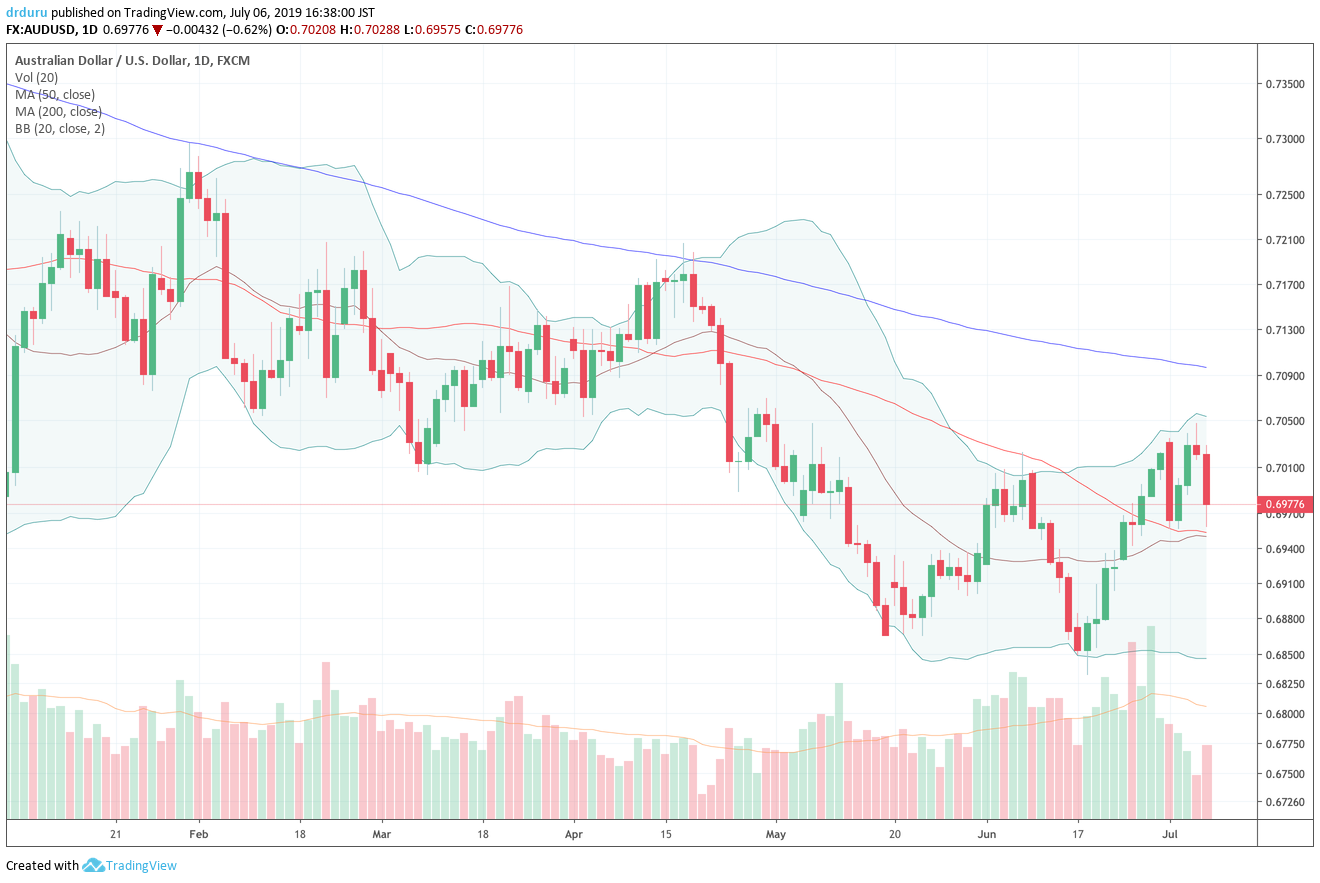
Source: TradingView.com
Be careful out there!
Full disclosure: long RIO puts, long BHP calls, long the Australian dollar
